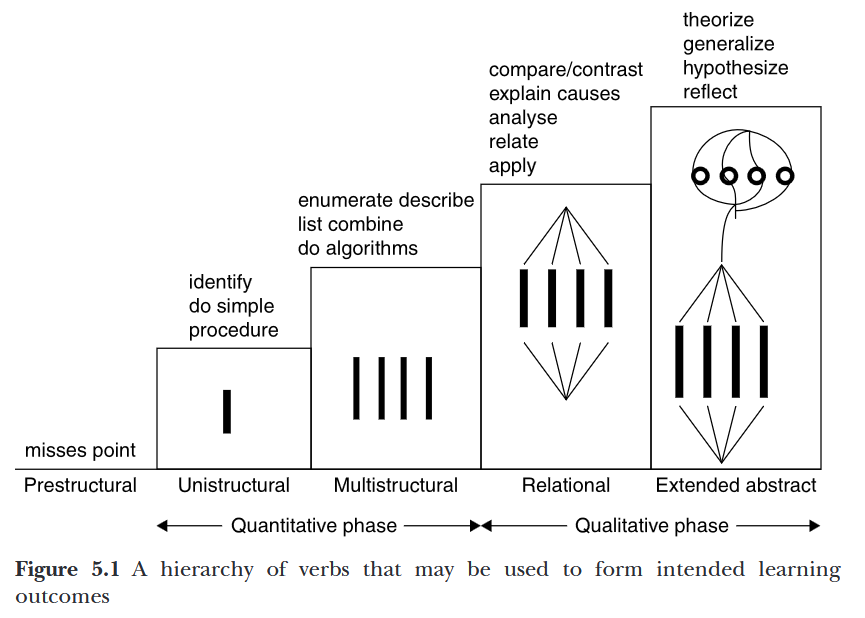I found a way to create order from my jumbled ideas
From a single idea to many, to networks of linked ideas to reconfigured networks of knowledge.
This is a model of how students learn, devised by educational psychologist John B. Biggs and presented in his co-authored book, Teaching for quality learning at university: what the student does.
The key concept here, ‘structure of observed learning outcomes’ (SOLO), is summarised quite well in Wikipedia.

(Image source: Biggs and Tang, 2011: 91.)
To me this diagram clearly relates to the process of writing and developing short, clear notes.
From a single note to many, to networks of linked notes, to reconfigured networks of knowledge.
The first, prestructural stage, though, isn’t simply empty in my experience. Instead I begin from a whole heap of ideas and thoughts jumbled together like pick-up sticks.

Image source: commons.wikimedia.org/wiki/File…
The problem is it’s too easy to stay in this prestructural stage, where thoughts and ideas are plenty, but they’re a jumbled mess. That’s because even when we make notes, our notes remain either poorly organised, or else well-organised, but set up according to some pre-established schema that hinders further conceptual development.
This metaphor of straightening and sorting a convoluted mess is also key for computer programming. For example, it’s evident on the cover of a well-known book, A Philosophy of Software Design, by John K. Ousterhout.

The first stage proper, the unistructural stage, in my estimation, relates to the capacity to create an atomic note, that is, a note that identifies, isolates and deals with just one thought, idea or concept. This is the key move, and the reason I like to refer to ‘atomic notes’ as the leading idea.
The second, multistructural stage refers to the ability to do this repeatedly, reliably, and systemically.
According to Biggs and Tang, these early stages involve increasing the quantity of knowledge. In my adaptation, this simply means making more atomic notes.
The third, relational stage involves the process of making meaningful links, which is at the heart of the Zettelkasten methodology, and is also crucial for wikis.
The fourth, extended abstract stage relates to the ability to reconfigure networks of concepts to create new knowledge and insight.
According to Biggs and Tang, these stages move beyond the quantitive acquisition of knowledge and towards the qualitative:
“This distinction between knowing more and restructuring parallels two major curriculum aims: to increase knowledge (quantitative: unistructural becoming increasingly multistructural); and to deepen understanding (qualitative: relational, then extended abstract). Teaching and assessment that focus only on the quantitative aspects of learning will miss the more important higher level aspects. Quantitative, Level 1, theories of teaching and learning address the first aim only, increasing knowledge.” (Biggs and Tang, 2011: 90)
This is how I move: from jumbled thoughts to clearer single notes, from single notes to many, from many to meaningful links, and then—if I keep going—to something new.
The SOLO taxonomy shows why this progression matters. It’s not just about gaining more knowledge, but about transforming it. Make modular notes, link them, and let new insights emerge. This isn’t just a way for me to remember what I’ve learned—it’s a way to learn what I didn’t know I knew.
And if it still feels like pick-up-sticks in your head, don’t worry, there’s time—the game is just beginning.
Now read: Atomic notes and the unit record principle.
Reference:
Biggs, J and Tang, C. (2011): Teaching for Quality Learning at University, (4th Edition. McGraw-Hill and Open University Press, Maidenhead). ISBN: 78-0-33-524275-7. PDF
—-
Don’t forget to subscribe to the weekly email digests.